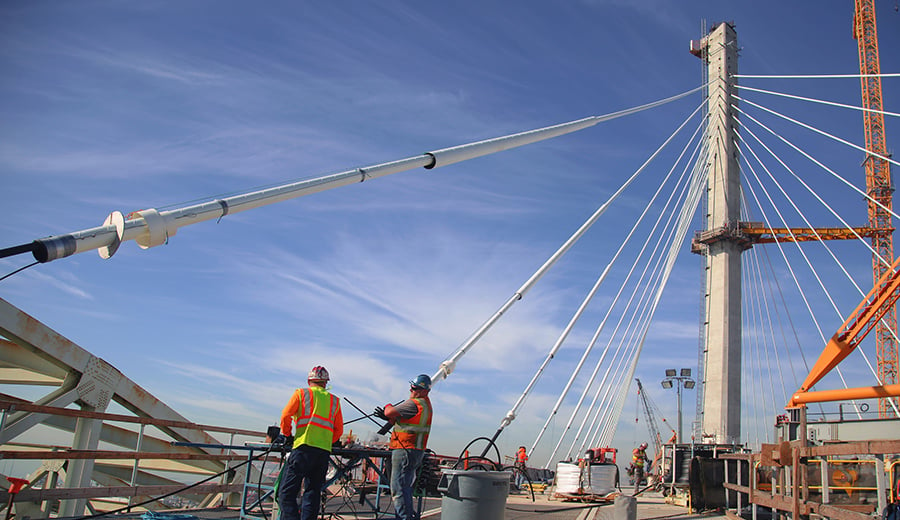 Jackie Wei Green
Americas Head of Communications,Los Angeles
Jackie Wei Green
Americas Head of Communications,Los Angeles
The Gerald Desmond Bridge Replacement Project has entered its final phase of construction with the closure of its three mid-spans. The new six-lane, cable-stayed bridge will replace the existing Gerald Desmond Bridge, which has approached the end of its useful life after more than 50 years in operation. Connecting the Port of Long Beach to its downtown and surrounding communities in California, the two-mile-long replacement bridge is critical infrastructure and a major economic generator for the region, serving as a corridor transporting 15 percent of all containers that go in and out of US ports.
Working closely with SFI joint venture and the Port of Long Beach, Arup has served as the Engineer of Record for the design of the bridge replacement and provided structural engineering, geotechnical engineering, bridge engineering, traffic operations analysis, and lighting design services. Most notably, Arup implemented the unique seismic design of the main span and towers, a unique Double Texas U-Turn design, and innovative techniques that will reduce the need for maintenance over time.

